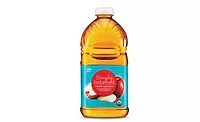Putting a Premium on Value
Putting a Premium on Value
Sarah Theodore
Editor
For several years now, growth in the beverage industry has come from premium brands. The trend has carried through into the beginning of this year, as demonstrated by this month’s wine and spirits Category Focus feature on page 18. The practice of trading up to luxury brands has led to success in both of those categories, and “premiumization” is among the most-cited industry trends, leading new product development in nearly every segment.
But as the United States digs itself out of a mortgage
crisis and we brace for recession — whether long or short — you
have to wonder if that trend will hold. The prevailing wisdom has said that
small-scale luxury items such as wine, beer and spirits, will fare better
than big-ticket items. They might even thrive since a small splurge could
offset consumer disappointment over having to forgo bigger luxury
purchases.
A new report in ACNielsen’s Consumer Insights publication
titled “Declining U.S. Incomes: How Future Spending Patterns Will Be
Impacted,” takes on those questions, examining the role that an
economic downturn could have on consumer packaged goods. In addition to
current trends, the report looks at the impact baby boomers will have on
the market as they retire and live on lower incomes.
The report stresses the need to appeal to a broad
spectrum of income earners. “Unlike the market for luxury goods, most
packaged goods are relatively inexpensive and appeal to consumers across a
wide range of economic status, including the large share of U.S. households
in the lower income ranges. Without at least some volume participation from
the lower end of the income scale, it can be difficult to build the kind of
large brand appeal that manufacturers seek,” Doug Anderson, executive
vice president of research and development, Nielsen Homescan & Spectra,
wrote in the report.
As Beverage Industry Managing Editor Elizabeth Fuhrman indicates on page
64 of this issue, the need for more value-priced products is evident
in at least one beverage segment — health and wellness. It’s
possible that shifting economic trends will bring forth additional
categories that could benefit from more moderately priced options. In
addition, private label, which has taken on a pretty premium feel of its
own during the past several years, may become a bigger threat — or
opportunity, depending which side of the fence you sit on.
I have yet to hear any doom-and-gloom predictions for
those already-popular premium products. Most indicate they expect a
challenging year, but nothing tragic. It is, however, an interesting time
to examine whether opportunities or needs exist to serve additional
segments of the population that might have been left out of the race to the
“ultra” end of the pricing spectrum. A number of creative
companies might even find ways to grow their economy brands, which have
languished during the past several years, and maintain their premium lines
as well.
SNEAK PEEK
March
2008 Soft Drink Report
Beverage R&D — Probiotics and Prebiotics
Packaging — Case Packers and Wrappers
Operations — Processing Automation
April
Beer Report
Beverage R&D — Natural and Organic Ingredients
Packaging — Designers’ Roundtable
Warehouse/Distribution — DSD Sales & Marketing Solutions
2008 Soft Drink Report
Beverage R&D — Probiotics and Prebiotics
Packaging — Case Packers and Wrappers
Operations — Processing Automation
April
Beer Report
Beverage R&D — Natural and Organic Ingredients
Packaging — Designers’ Roundtable
Warehouse/Distribution — DSD Sales & Marketing Solutions
Looking for a reprint of this article?
From high-res PDFs to custom plaques, order your copy today!






